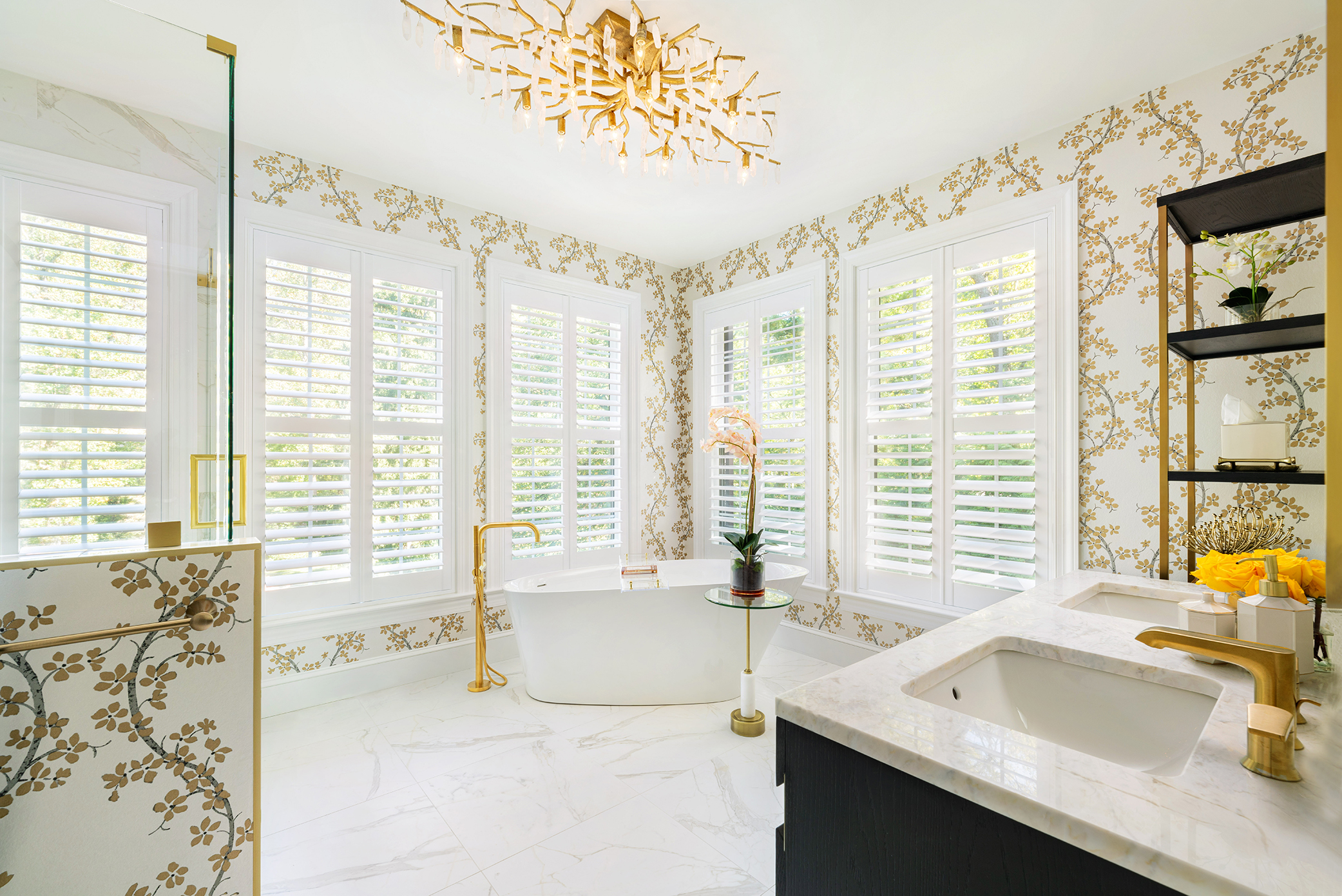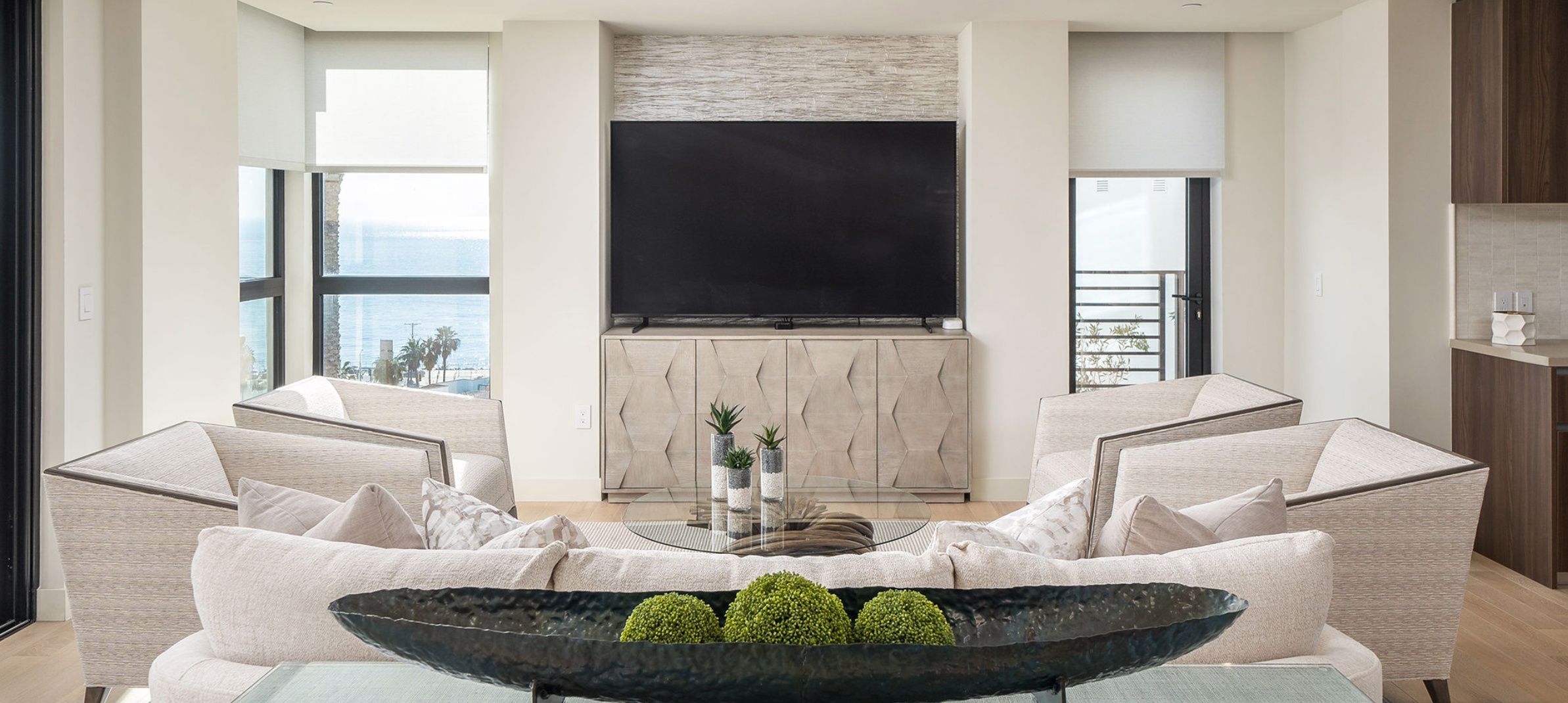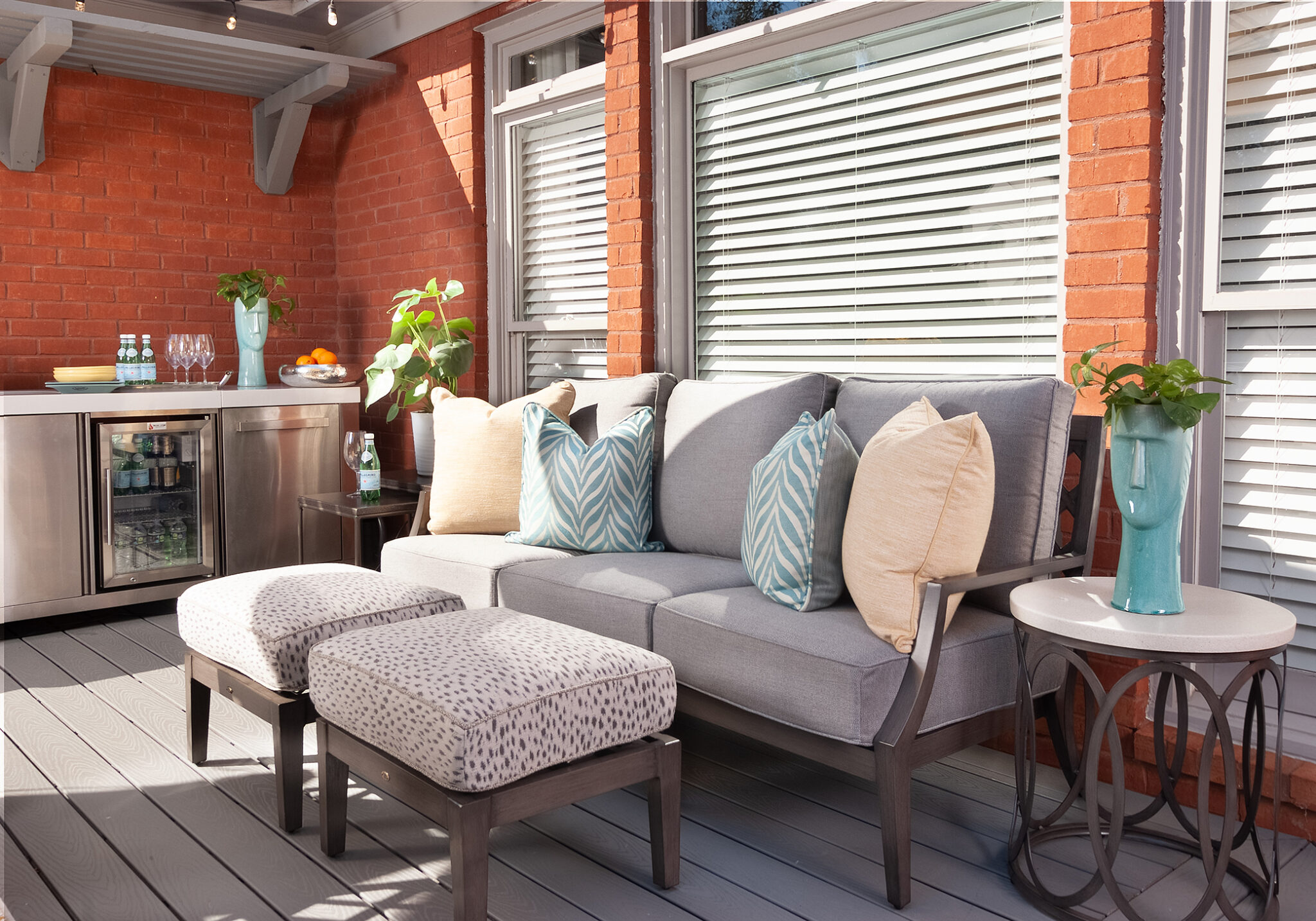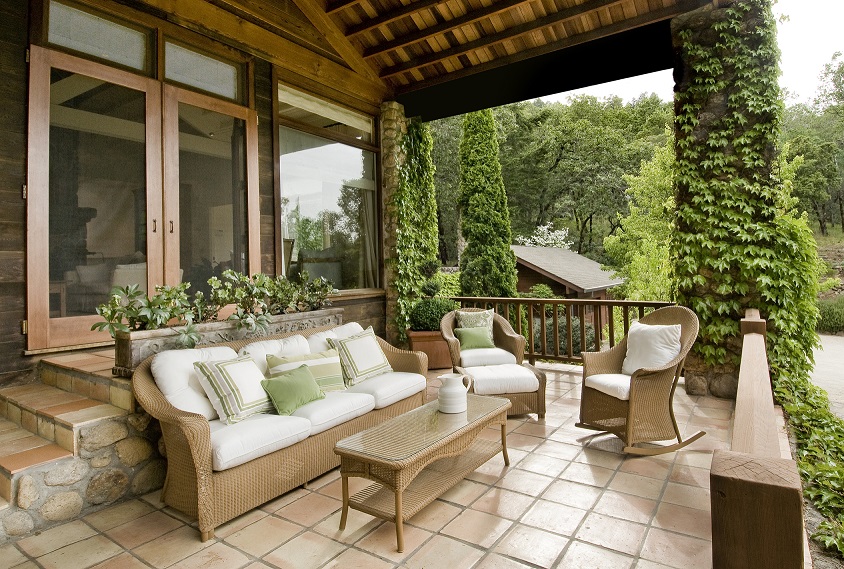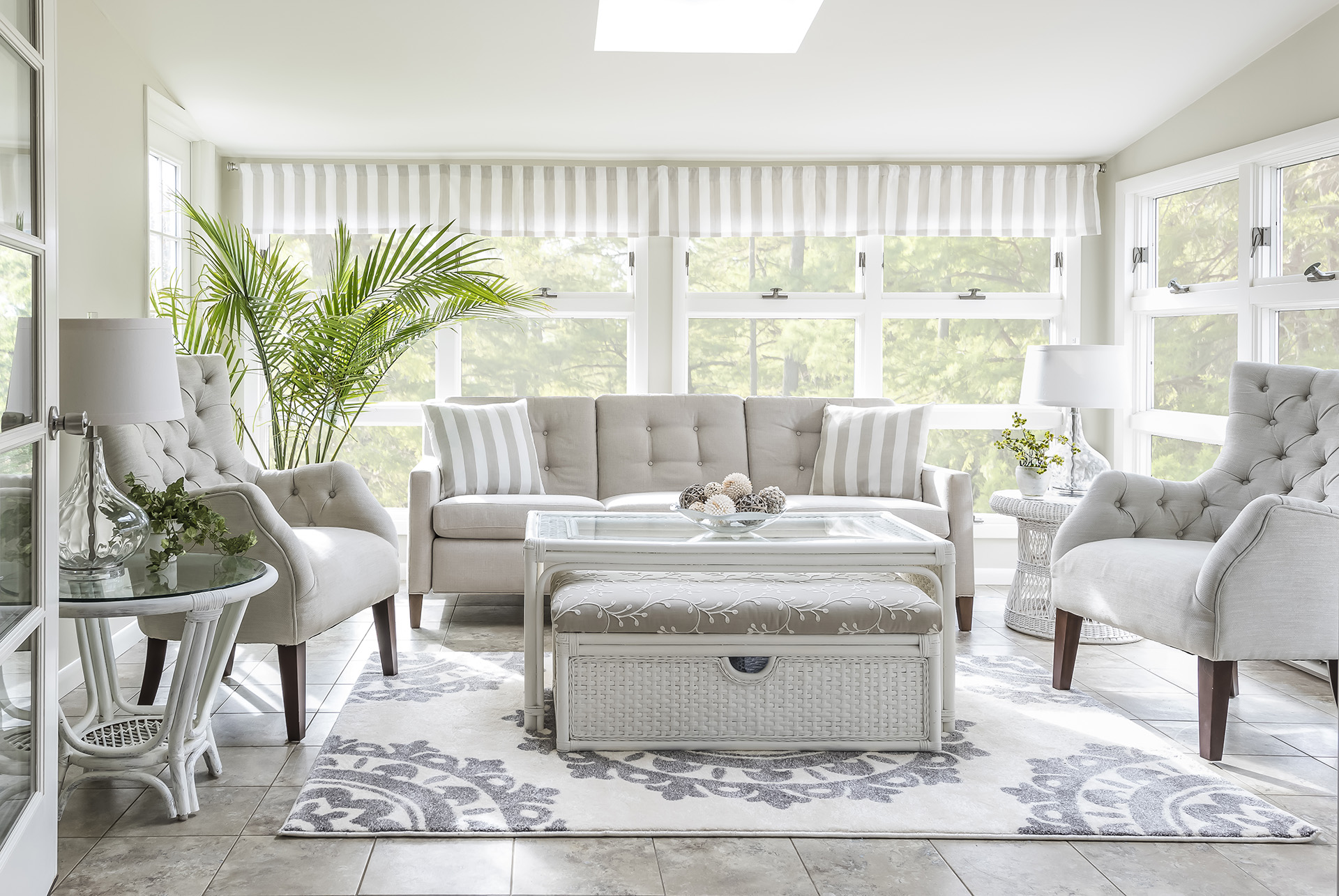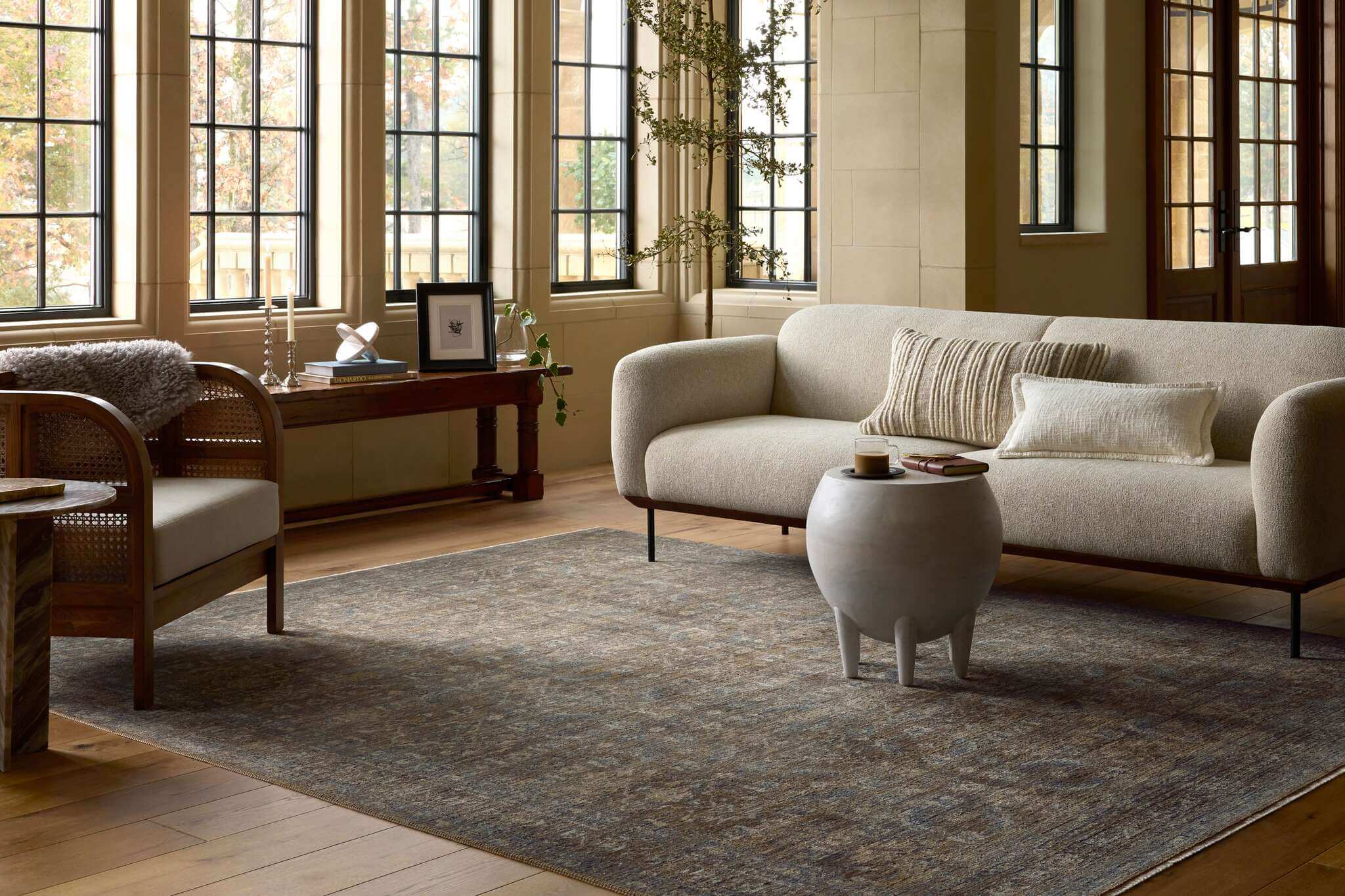In our fast-paced world, turning your home into a sanctuary has never been more essential. Whether you’re looking to relax after a hectic day or simply improve your mental well-being, creating a sensory haven can offer the peaceful escape you need. This approach, known as multisensory design, uses elements that engage your senses to boost relaxation, reduce anxiety, and encourage mindfulness.
These ideas were highlighted in a conversation with Lisa Williams, Assistant Professor of Interior Design at High Point University. Dr. Jane Nichols, Chair of the Interior Design Department, introduced us to Williams, who had recently wrapped up a research study on sensory design.
While some might think sensory design is mostly for those with specific sensitivities—like individuals on the autism spectrum or those with Misophonia, a condition where certain sounds trigger emotional reactions—it’s actually beneficial for everyone. “From soft lighting and textured surfaces to calming sounds, creating a sensory sanctuary can help you escape everyday stress while improving your home environment,” Williams explains.
The idea of a sensory haven comes from Multisensory Environments (MSEs), which have been used in hospitals, therapy rooms, and even universities to help people manage stress and anxiety. These spaces are thoughtfully designed to balance sensory stimulation and calmness, using elements that appeal to sight, sound, touch, smell, and even our sense of spatial awareness (proprioception).

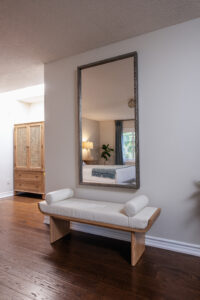
Bedrooms are one of the most popular spaces to integrate sensory design elements. Take, for example, the serene transitional bedroom above, styled with a blend of faux silk drapes, rattan accents, and carved wood furniture. A cozy area rug grounds the space, while an organic-shaped bench and a large mirror optimize the room’s flow. With textures thoughtfully layered throughout, the atmosphere is both tranquil and Zen—perfect for winding down after a long day.
Lighting is the Foundation
Anyone who’s spent time in a movie theater or watching TV knows how powerfully lighting sets the mood or evokes emotions. But there’s actual science behind it, too. A *Psychology Today* article points out that “the neuroscience is clear—certain colors and intensities of light create atmospheres ideal for particular situations, while other types of lighting are more suitable in different contexts.”

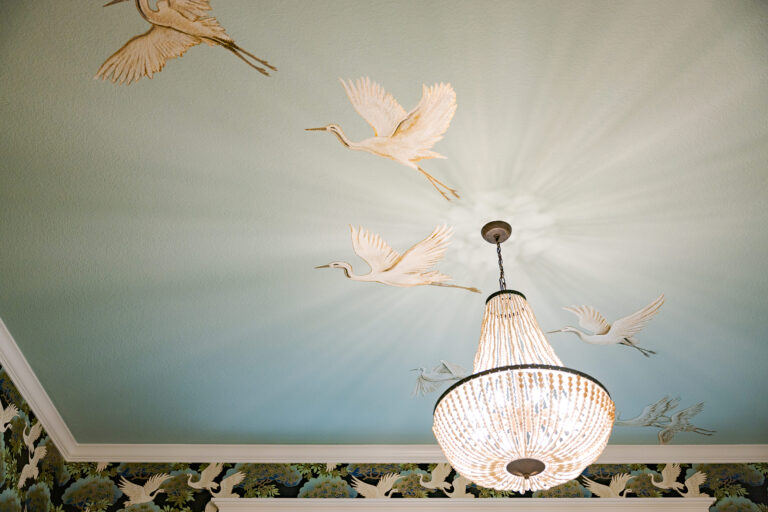
In the bedroom example, the variety of lighting includes candlelight, which adds a warm, sensory touch. The metallic wallcovering and accents stand out, thanks to carefully placed lighting. Hand-painted herons seem to fly across the ceiling, bringing a touch of nature’s tranquility indoors.
And let’s not forget the power of dimmable lighting! Being able to adjust the lighting to suit the moment can dramatically change the room’s mood. “More dynamic lighting, like LED strips or fiber-optic lights, can enhance the sensory experience,” says Williams. “These lighting options allow you to tweak brightness, colors, and even patterns, creating an interactive visual element. Picture a soft glow of green or blue lights paired with natural sounds, instantly transforming your space into a forest-like retreat.”
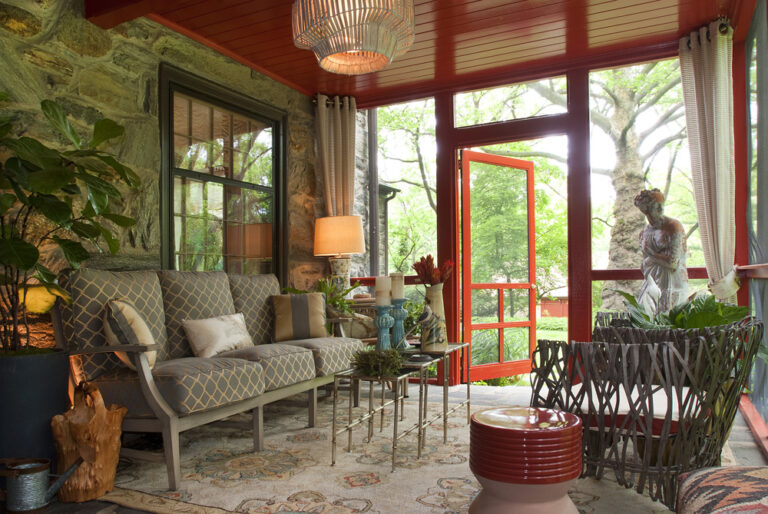

To appeal to the sense of touch, Williams suggests incorporating soft, textured materials like velvet pillows, weighted blankets, stuffed animals, or even a hammock to invite tactile engagement. Comfortable seating with plush cushions also helps create a space where you can truly sink into relaxation, both physically and mentally.
Aromatherapy is another tried-and-true method for enhancing relaxation and reducing stress. Using essential oils such as lavender, peppermint, or citrus blends in diffusers fills the room with calming fragrances. “The quick-change feature on modern diffusers, like the one used at UNC-Greensboro, allows you to easily switch between scents depending on your mood or the time of day,” Williams adds.
Ultimately, the goal of creating a sensory haven at home is to customize the space to suit your personal preferences and needs. “It’s all about having control over your environment,” Williams explains. “The idea is to turn an ordinary room into your own sanctuary—a place to escape, recharge, and find comfort.”
If you’re looking to bring sensory-focused design principles into your home and create a sanctuary that nurtures both mind and body, I’d love to help. At Saree Parry Design, my team and I specialize in creating personalized spaces that reflect your style and needs. Let’s work together to transform your living space into the haven you deserve. Contact us today to get started!


